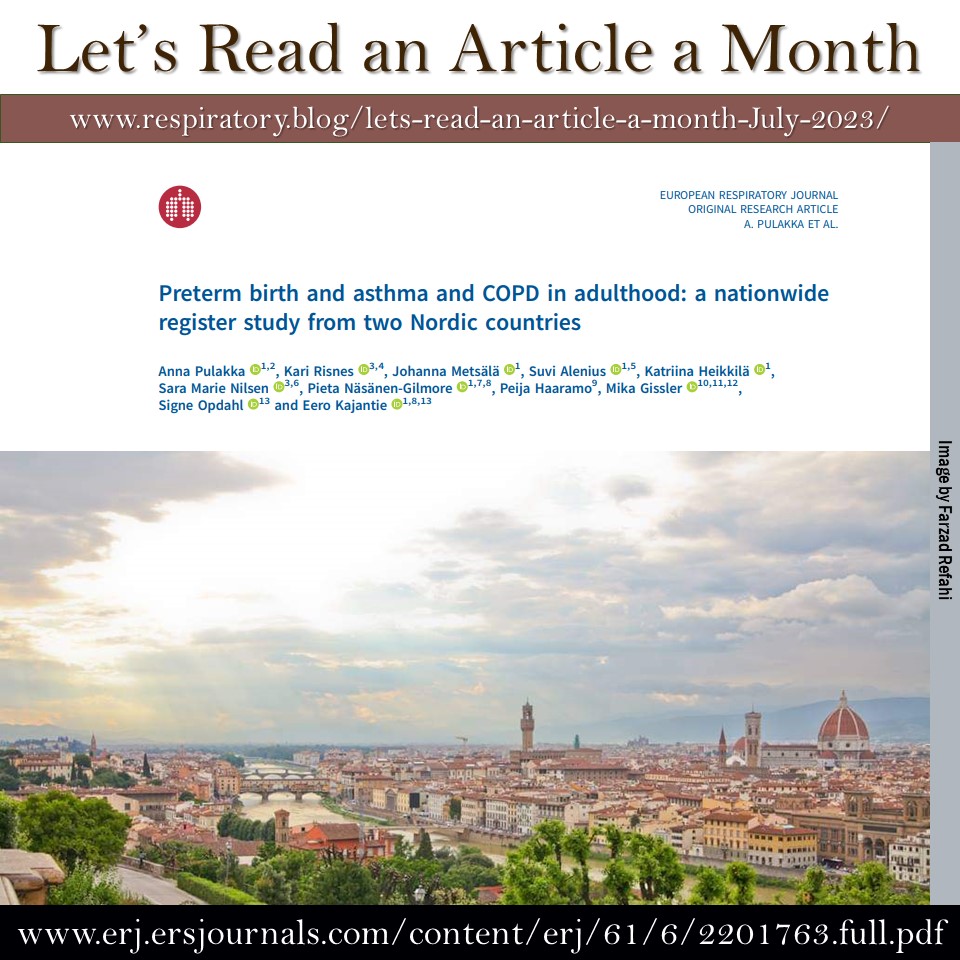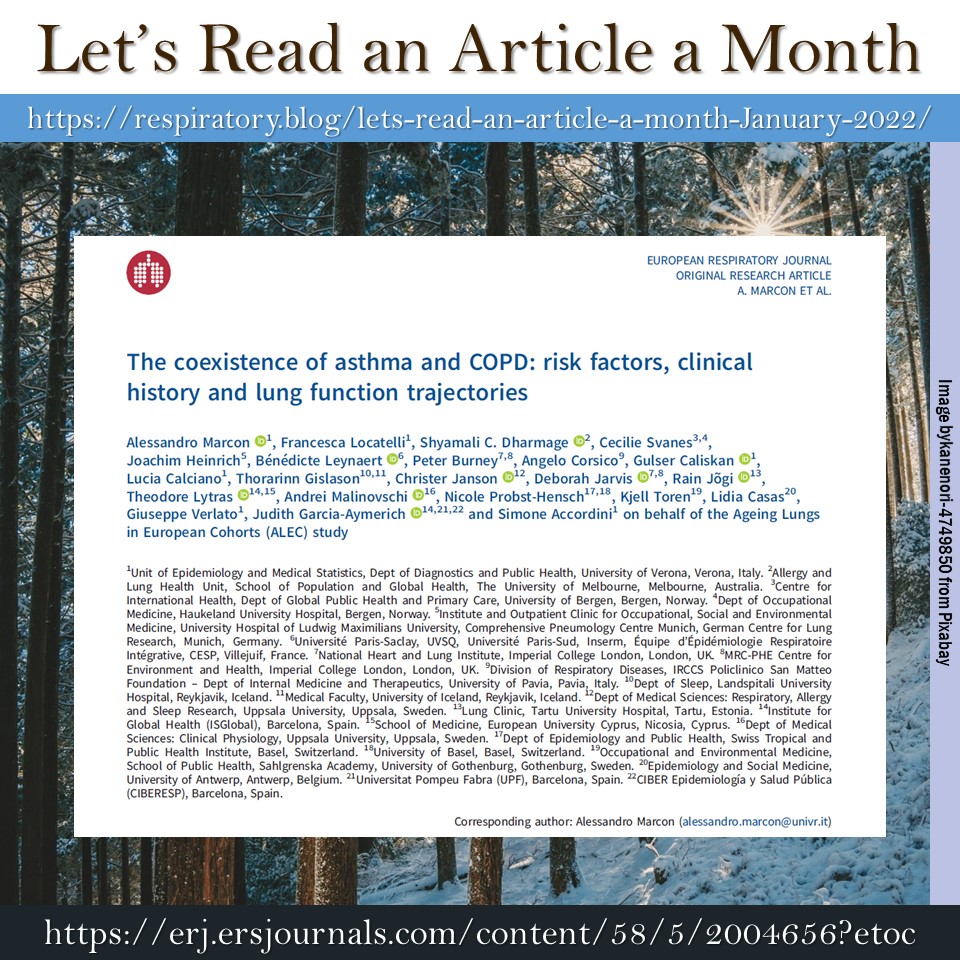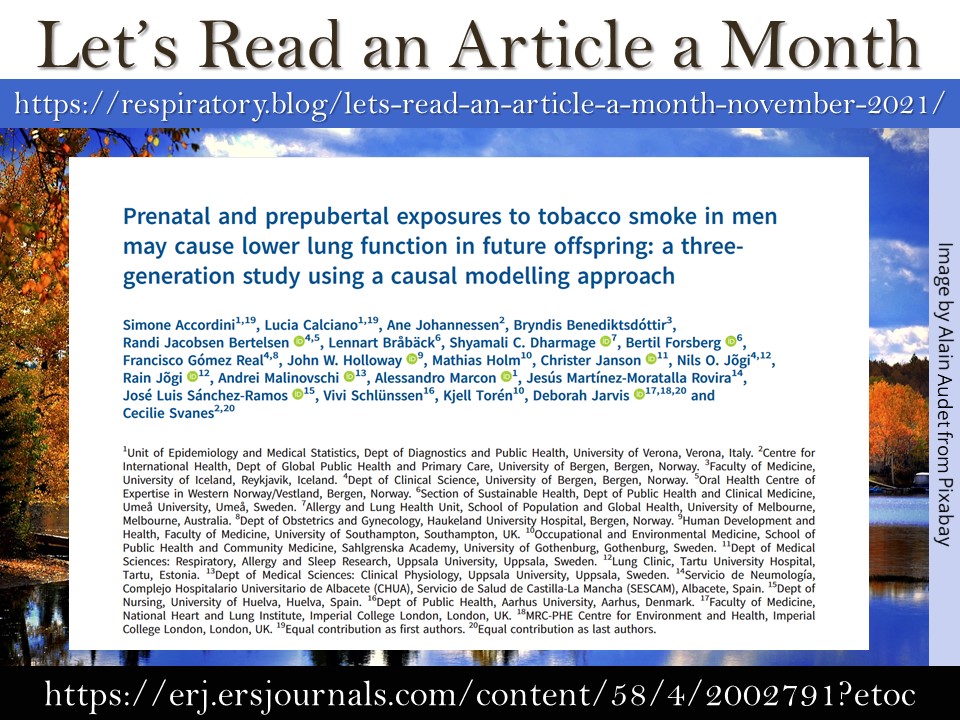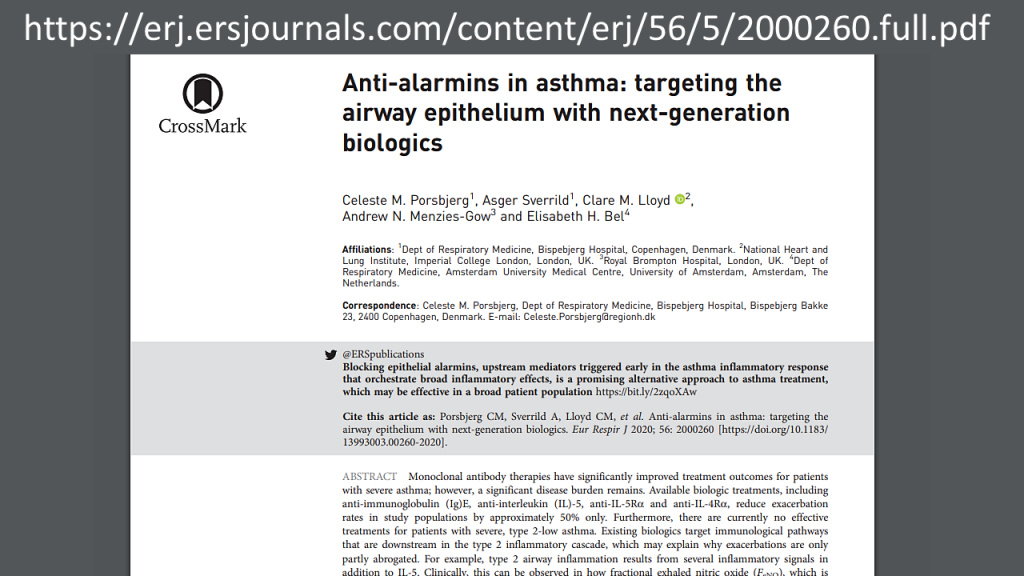
Every month I try to read an open-access article. Then, I share the title and associated link with my followers. This is to encourage clinicians to read articles, stay up-to-date, and continue to grow.
The objective of this month’s paper is to investigate “the association between the full range of gestational ages (GA) and obstructive airway disease (asthma and/or COPD) in early and mid-adulthood, using nationwide data from two Nordic countries” (p2).
Preterm birth and asthma and COPD in adulthood: a nationwide register study from two Nordic countries
By: Anna Pulakka, Kari Risnes, Johanna Metsälä, Suvi Alenius, Katriina Heikkilä, Sara Marie Nilsen, Pieta Näsänen-Gilmore, Peija Haaramo, Mika Gissler, Signe Opdahl and Eero Kajantie.
European Respiratory Journal 2023 61: 2201763; DOI: 10.1183/13993003.01763-2022
Link to the article: https://erj.ersjournals.com/content/61/6/2201763
n=(Finland, born 1987-1998: 706,717 and Norway, born 1967-1999: 1,669,528)
“ Adults born preterm are more often treated in specialist care for obstructive airway diseases, including both asthma and COPD, compared to individuals born full term. The higher risk is extended to those born late preterm and early term and is higher for those who received a bronchopulmonary dysplasia diagnosis in infancy or who were born SGA. Preterm birth should be recognised as a risk factor for obstructive airway diseases in adulthood, and full medical history for people presenting with respiratory symptoms should include key perinatal data such as birth weight, gestational age and key pregnancy conditions.”
page 10
As always, take the time to study the article and learn about all the results and findings.
Happy reading and learning,
Farzad Refahi
July 18th, 2023
https://respiratory.blog/lets-read-an-article-a-month-July-2023/



